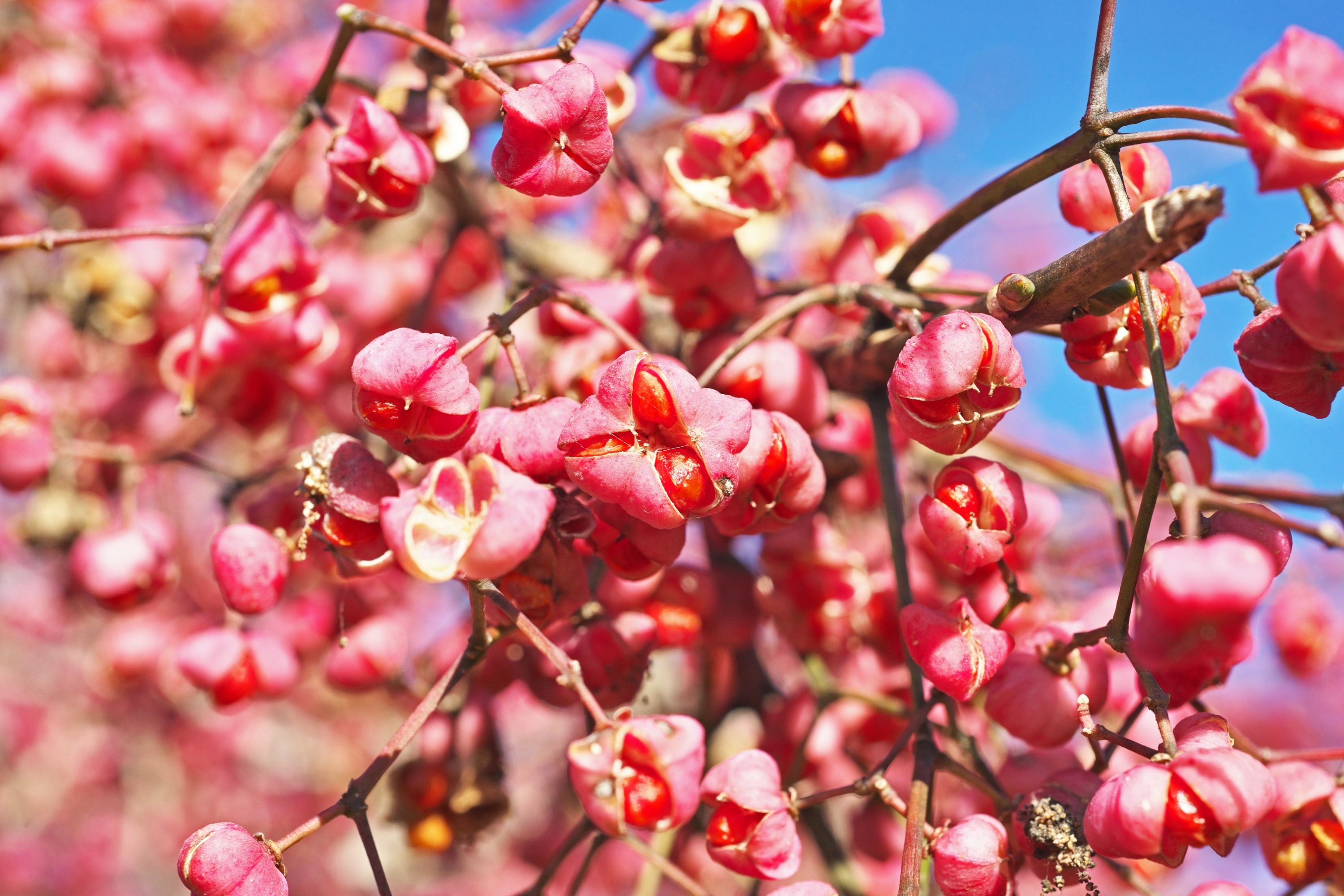Hamilton's spindletree
(Euonymus hamiltonianus)

Description
Euonymus hamiltonianus, commonly known as Hamilton's spindle tree, is a deciduous shrub that belongs to the family Celastraceae. It is native to the Himalayas and is found in the mountainous regions of China, Bhutan, Nepal, and India. The plant is widely cultivated as an ornamental plant in gardens and parks for its beautiful foliage, attractive fruits, and striking autumn colors. Description Euonymus hamiltonianus is a slow-growing shrub that can reach a height of up to 3 meters. It has a dense, bushy habit and a spreading form. The plant has smooth, grayish-brown bark and branches that are thin and wiry. The leaves are oval-shaped, about 5-8 cm long, and 2-4 cm wide. They are dark green in color and have a glossy, leathery texture. The foliage turns a bright, fiery red in the autumn, making it an attractive plant for autumnal landscapes. The plant produces small, fragrant, greenish-yellow flowers in early summer, which are followed by red, winged fruits. The fruits are about 1 cm in diameter and are held in clusters of four to six. They remain on the plant well into the winter, providing a striking contrast against the autumn foliage. Cultivation Euonymus hamiltonianus is an easy-to-grow shrub that thrives in a range of soil types, including clay, loam, and sandy soils. It prefers a well-drained soil that is slightly acidic to neutral. The plant grows well in full sun to partial shade and requires little pruning, making it a low-maintenance shrub. Propagation The plant is propagated by semi-hardwood cuttings taken in mid-summer. The cuttings should be about 10 cm long and should have a few leaves attached. Dip the cuttings in rooting hormone and plant them in a well-draining soil mix. Keep the soil moist and place the cutting in a bright, warm location. The cuttings should root within 4-6 weeks. Uses Euonymus hamiltonianus is a popular ornamental plant in gardens and parks. It is used as a specimen plant or as a hedging plant. The plant is particularly suited for small gardens and urban landscapes due to its compact size and low-maintenance requirements. The plant is also used in traditional medicine in its native range. The roots and bark of the plant are used to treat a variety of ailments, including fever, diarrhea, and dysentery. The plant is also used as an anti-inflammatory and as a sedative. Pests and Diseases Euonymus hamiltonianus is generally pest and disease-free. However, it may be susceptible to scale insects, which can be controlled by applying a horticultural oil spray. Conclusion Euonymus hamiltonianus is a beautiful and versatile shrub that is well-suited for a range of garden settings. Its attractive foliage, showy fruits, and striking autumn colors make it an ideal plant for autumnal landscapes. With its easy cultivation requirements, low-maintenance requirements, and wide range of uses, Euonymus hamiltonianus is a must-have for any garden or park.
Taxonomic tree:







